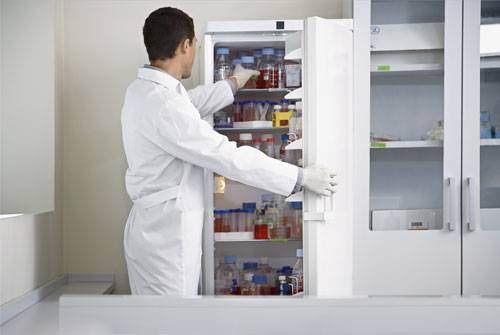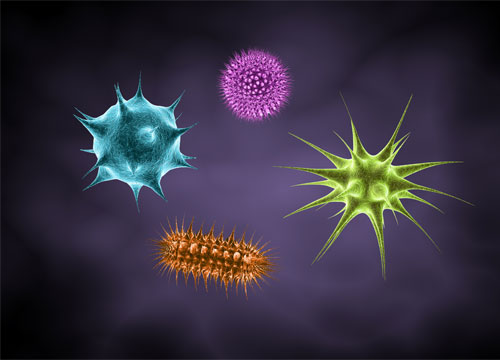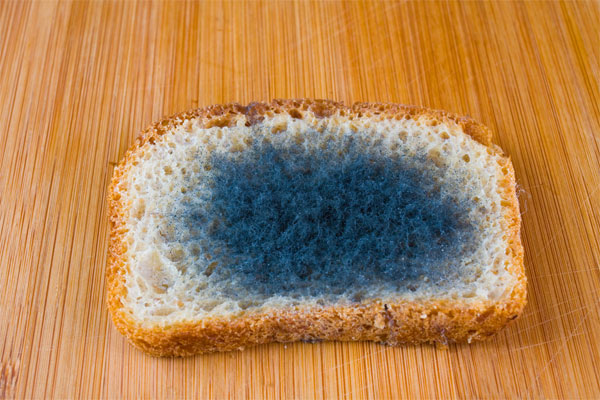How a laboratory refrigerator is different from a household refrigerator?


Laboratory refrigerator frankly speaking is no different from a domestic refrigerator. The difference lies in its usage and calibration requirements.
A household refrigerator is a facility used for preservation of edible products such as milk, yoghurt, fruits, vegetables, meats, cold drinks, drinking water, sweetmeats, etc. The facility is often taken for granted and one does not give it much thought after switching it ON and placing the food items inside. However, when used in the laboratory a refrigerator requires proper maintenance and care because of the nature of stored items.
The laboratory refrigerator is mainly used for preservation of:
- Samples prior to analysis
- Temperature sensitive working standards
Guidelines on use of laboratory refrigerator
- No sample or reference material should be kept exposed but should be sealed in plastic pouches or standard vials. This is essential to prevent cross contamination due to proximity with other samples.
- Light-sensitive samples require storage in dark pouches or amber coloured vials.
- Labels should be properly affixed and covered with a transparent film so that they do not become illegible due to moisture condensation
- Store chemicals, standards, foods and pharmaceuticals in appropriate temperature zones commensurate with their storage requirements. Do not get tempted to place the sample at any space available as it will not serve the required purpose.
- It is advisable to label the cabinets and keep an updated record of sample locations which should be updated through user records. This will also save valuable time in locating the samples and standards when needed
- Clean the cabinets and shelves only after disconnecting the power at least on weekly basis
Calibration Requirements
Laboratory refrigerator unlike a household refrigerator requires daily calibration and maintenance of calibration records like any other laboratory instrument.
A calibrated thermometer is placed in a beaker containing silicone oil in different drawers and freezer. The door is closed and after stabilizing for 15 min temperature readings are recorded. The temperature in cabinets should range from 2 to 8°C and in the freezer from -10 to -20°C.
A properly maintained and calibrated refrigerator will help preserve the samples and standards for extended periods of time. Laboratory refrigerator should never be used for storage of edibles and drinks as accidental contamination from stored chemicals can lead to serious consequences.

 AAS, GC & HPLC Certificate Course Bundle
AAS, GC & HPLC Certificate Course Bundle  Certificate Course on AAS
Certificate Course on AAS  Certificate Course on GC
Certificate Course on GC  Certificate Course on High Performance Thin Layer Chromatography (HPTLC)
Certificate Course on High Performance Thin Layer Chromatography (HPTLC)  Certificate Course on ISO/IEC 17025:2017 - CPD Certified
Certificate Course on ISO/IEC 17025:2017 - CPD Certified  Certificate Course on Lab Safety
Certificate Course on Lab Safety  Certificate Course on Measurement Uncertainty in Chemical Testing
Certificate Course on Measurement Uncertainty in Chemical Testing  AAS, GC & HPLC Certificate Course Bundle
AAS, GC & HPLC Certificate Course Bundle  Certificate Course on AAS
Certificate Course on AAS  Certificate Course on GC
Certificate Course on GC  Certificate Course on High Performance Thin Layer Chromatography (HPTLC)
Certificate Course on High Performance Thin Layer Chromatography (HPTLC)  Certificate Course on ISO/IEC 17025:2017 - CPD Certified
Certificate Course on ISO/IEC 17025:2017 - CPD Certified  Certificate Course on Lab Safety
Certificate Course on Lab Safety  Certificate Course on Measurement Uncertainty in Chemical Testing
Certificate Course on Measurement Uncertainty in Chemical Testing 


Thanks for sharing the Affirmative information about Lab Practices for a Laboratory Refrigerator or Freezer.